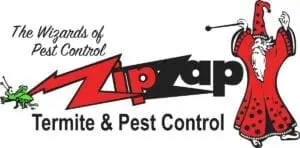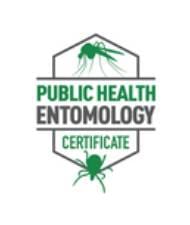How to Protect Your Home from Termites in Kansas City

Kansas City homeowners face the constant threat of termites, a pest that can cause serious damage if left untreated. With Kansas City’s warm, humid summers and relatively mild winters, termites can thrive year-round, making homes vulnerable to infestations. Protecting your home from termites requires understanding their habits, taking preventative measures, and knowing when to call in professional help. In this guide, we’ll explore how termites survive in Kansas City, the signs of an infestation, and actionable steps you can take to protect your home.
Types of Termites Common in Kansas City
The most common termite species in Kansas City are subterranean termites, which live underground and build mud tubes to access food sources. Subterranean termites are highly destructive because they can eat away at the wooden structures of your home without being noticed until significant damage has been done.
Drywood termites are not in the Kansas City area but are worth mentioning. Unlike subterranean termites, drywood termites do not require soil to live and can establish colonies inside dry, unrotted wood. This means they can infest anything from furniture to wooden beams in your home.
Knowing which type of termite you’re dealing with can help you take the proper steps to protect your home, but both types pose a significant risk and require vigilance.
How Termites Thrive in the Kansas City Climate
Kansas City’s climate creates the perfect environment for termites to thrive. Termites need moisture to survive, and the combination of humid summers and occasional rain provides an ideal setting. In winter, while termite activity might slow down, the relatively mild temperatures mean that termites can remain active, especially if they have found shelter in a heated home.
Subterranean termites, in particular, prefer the moist soil found in and around Kansas City homes. They build underground colonies and search for food sources, often targeting homes with wood in contact with the soil or where moisture has weakened structural elements. This is why homes with poor drainage, leaky pipes, or unsealed entry points are especially vulnerable.
Signs of a Termite Infestation
Detecting termites early is crucial to minimizing damage. Here are some key signs that could indicate a termite infestation in your Kansas City home:
- Mud Tubes: Subterranean termites create mud tubes as highways to travel between their colonies and food sources. These tubes are often found along the foundation or walls of a home.
- Hollow-Sounding Wood: Tap on wooden structures like walls or floors. If they sound hollow, termites may have eaten away the interior, leaving only a thin shell of wood behind.
- Swarmers: Winged termites, also known as swarmers, appear in the spring as they leave their colony to establish new ones. If you find discarded wings near windowsills, doors, or your yard, it strongly indicates a nearby infestation.
- Frass: Drywood termites leave behind small, pellet-like droppings called frass. If you spot tiny piles of this substance near wooden structures, termites may be present.
- Blistering Wood or Bubbling Paint: As termites consume wood, they may cause the surface to blister or paint to bubble, which can indicate internal damage.
If you notice any of these signs, it’s important to take action immediately to prevent further damage.
Preventative Measures to Protect Your Home
Preventing termites from invading your home in the first place is far easier than dealing with a full-blown infestation. Here are some key steps you can take to keep termites at bay:
- Moisture Control: Since termites are attracted to moisture, make sure your home is well-drained. Repair leaky pipes, ensure gutters are clear and properly functioning, and direct water away from your home’s foundation. If necessary, use dehumidifiers in basements or crawl spaces.
- Proper Wood Storage: Avoid storing firewood or other wood debris directly beside your home’s foundation. Keep woodpiles elevated and at least 20 feet away from your house. Similarly, wooden mulch can attract termites, so consider using alternative landscaping materials.
- Seal Cracks and Gaps: Termites can enter through even the smallest openings, so inspect your home’s foundation and exterior walls for cracks, gaps, or holes. Use caulk or another sealant to close off potential entry points.
- Remove Excess Wood or Debris: Old tree stumps, fallen branches, and decaying wood around your home can serve as termite bait. Remove these items to limit food sources.
- Ventilation: Make sure crawl spaces are properly ventilated to reduce humidity levels, which attract termites. Proper ventilation also helps prevent wood rot, which can attract termites.
Regular Home Inspections and Termite Monitoring
While taking preventive measures is crucial, regular inspections are just as important. You can perform basic inspections yourself, but hiring a professional pest control service to check for termites annually ensures that any signs of infestation are caught early.
- DIY Termite Monitoring: You can use termite bait stations to monitor for activity. These stations contain cellulose, which attracts termites and allows you to detect early signs of a colony near your home. Place them around the perimeter of your home, particularly in areas with wood-to-soil contact.
- Professional Inspections: Professionals are trained to spot early warning signs of termites, even in hard-to-reach places like crawl spaces or within walls. It’s recommended to schedule an annual termite inspection to ensure your home is protected year-round.
Professional Termite Treatments and Solutions
If termites have already infiltrated your home, acting quickly is essential. Several professional treatment options are available to eradicate termites and prevent future infestations.
- Chemical Barriers: This method involves applying a liquid pesticide around your home’s foundation to create a barrier that termites cannot cross. It’s an effective way to stop termites from entering your home, and it can also kill existing colonies.
- Bait Systems: Bait stations are set up around the home, and termites are attracted to the bait, which contains a slow-acting toxin. Once the termites carry the bait back to their colony, it spreads, eventually eliminating the entire colony.
- Fumigation: For severe infestations, fumigation may be necessary. This process involves sealing off your home and using gas to kill termites. While highly effective, it is more invasive and costly than other methods.
In any case, a professional pest control company will assess your home and recommend the best treatment based on the severity of the infestation and the type of termites involved.
Contact a Trusted Pest Control Provider
Protecting your Kansas City home from termites is essential to avoiding costly repairs and long-term damage. If you suspect termites or want to prevent an infestation, contact ZipZap Termite & Pest Control at (816) 407-7378 to schedule an inspection. Our expert team is ready to help keep your home termite-free.



